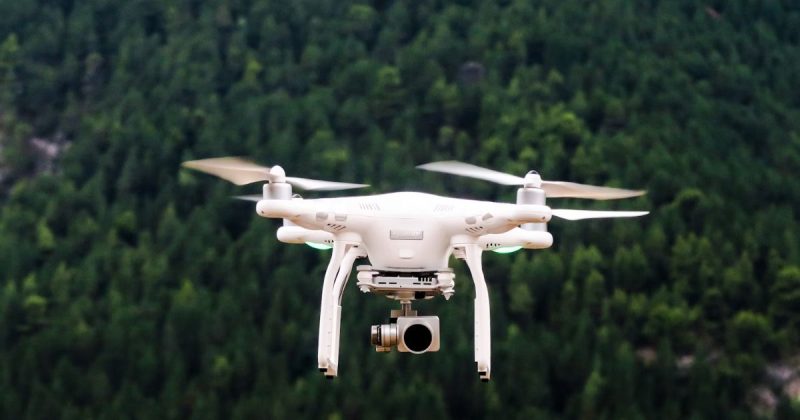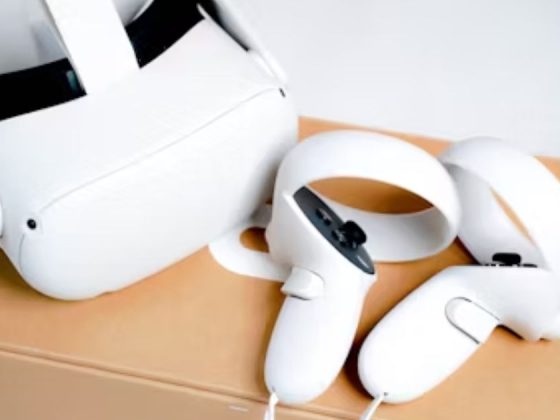Whether you’re a hobbyist, a filmmaker, or working in construction or agriculture, drones have become the go-to tools for capturing, surveying, and creating from above. With rapid technological advancements, 2025 is expected to offer a wide range of drones catering to various needs, from aerial photography to first-person-view (FPV) racing. Selecting the best drone requires understanding key factors, such as camera quality, flight performance, and safety features. This article examines these factors in-depth and offers a comprehensive review of the top 10 drones for 2025, enabling you to make an informed decision.
Top 10 Drones for 2025: Detailed Reviews
Below is a comprehensive review of the top 10 drones for 2025, selected based on performance, innovation, and user feedback. Each model excels in specific use cases, from professional videography to beginner-friendly exploration.
1. DJI Mavic 3 Pro
- Price: ~$2,199
- Key Specs: Triple-camera system (20MP Four Thirds, 12MP telephoto, 12MP medium tele), 5.1K/50fps video, 43-minute flight time, 15km range, omnidirectional obstacle avoidance.
Best For: Professional photographers and videographers
The DJI Mavic 3 Pro is a premium choice for aerial imaging, offering exceptional camera capabilities and advanced features that cater to the needs of professional photographers and videographers. Its advanced triple-camera system, anchored by a Hasselblad Four Thirds sensor, captures stunning visuals with outstanding color accuracy and fine detail. The 10-bit D-Log M profile offers deep post-production flexibility, while 5.1K video recording delivers cinematic quality to your footage. With up to 43 minutes of flight time and omnidirectional obstacle avoidance, it performs reliably even in complex environments. The foldable design and responsive RC-2 controller make it surprisingly travel-friendly for a drone with such powerful capabilities. However, its high price and advanced features may be daunting for beginners.
Pros: Incredible camera versatility, extended flight time, comprehensive safety system
Cons: Premium price tag, not ideal for entry-level users
2. DJI Mini 4 Pro
- Price: ~$759
- Key Specs: 1/1.3-inch 48MP sensor, 4K/100fps video, 34-minute flight time, 20km range, omnidirectional obstacle avoidance, sub-250g.
Best For: Enthusiasts and travelers.
The DJI Mini 4 Pro is a compact powerhouse, weighing under 250g, which allows it to bypass many regulations while still delivering impressive performance. Its 48MP sensor captures breathtaking 4K footage, delivering enhanced low-light performance through Dual Native ISO Fusion technology for more transparent, detailed images in challenging lighting conditions. Omnidirectional obstacle avoidance and ActiveTrack 360 make it forgiving for novices, while a 34-minute flight time suits extended shoots. The Mini 4 Pro’s portability and 10-bit D-Log M support appeal to creators on the go. Wind sensitivity is a minor drawback.
Pros: Lightweight, excellent camera, beginner-friendly.
Cons: Struggles in strong winds.
3. DJI Air 3S
- Price: ~$1,099
- Key Specs: Dual 48MP cameras (wide-angle, medium tele), 4K/100fps video, 45-minute flight time, 20km range, omnidirectional obstacle avoidance.
Best For: Mid-range creators seeking versatility.
The DJI Air 3S strikes a perfect balance between affordability and performance, offering powerful features at a more accessible price point. Its dual-camera system provides creative flexibility, featuring a 70mm telephoto lens for striking compositions. The 1-inch sensor excels in low light, while the 10-bit D-Log M ensures precise color grading. It’s a solid choice for outdoor shoots with a 45-minute flight time and strong wind resistance. While it may not match the Mavic 3 Pro’s high-end features, the Air 3S is a top contender for enthusiasts looking to upgrade from entry-level drones.
Pros: Long battery life, dual cameras, great value.
Cons: Lacks triple-camera versatility.
4. DJI Avatar 2
- Price: ~$999 (with goggles)
- Key Specs: 1/1.3-inch CMOS sensor, 4K/60fps video, 23-minute flight time, 13km range, propeller guards, FPV goggles.
Best For: FPV enthusiasts and action videographers.
The DJI Avata 2 redefines immersive flight, offering an exhilarating FPV experience with advanced features that bring a new level of control and excitement to aerial exploration. Paired with low-latency goggles, it delivers a pilot ‘s-eye view for thrilling maneuvers. The 4K/60fps camera with 10-bit D-Log M captures dynamic footage stabilized by RockSteady and HorizonSteady. Propeller guards enhance the drone’s durability, making it ideal for indoor flights or environments with obstacles. While its shorter flight time and niche appeal limit its versatility, FPV enthusiasts will appreciate the Easy ACRO mode, which is perfect for performing stunts.
Pros: Immersive FPV experience, robust, durable design, and superior video quality.
Cons: Short flight time and a steep learning curve.
5. Autel EVO Nano+
- Price: ~$679
- Key Specs: 1/1.28-inch 50MP sensor, 4K/30fps video, 28-minute flight time, 10km range, tri-directional obstacle avoidance.
Best For: Budget-conscious creators seeking alternatives to DJI.
The Autel EVO Nano+ is a strong competitor to DJI, offering a 50MP sensor for detailed stills and vibrant 4K video. Its compact, sub-250g design makes it a perfect choice for travelers, while tri-directional obstacle avoidance enhances safety during flights. The EVO Nano+ supports HDR for well-balanced exposures and features a user-friendly app for easy control and seamless operation. While its flight time and range lag behind those of DJI’s Mini series, it’s a reliable choice for those who avoid DJI’s ecosystem due to privacy or availability concerns.
Pros: High-resolution camera, compact, non-DJI option.
Cons: Limited obstacle avoidance, shorter range.
6. DJI Flip
- Price: ~$439
- Key Specs: 1/1.3-inch 48MP sensor, 4K/60fps video, 31-minute flight time, 10km range, forward-facing obstacle sensor, foldable propellers.
Best For: Indoor creators and casual users.
The DJI Flip features a unique folding propeller design, ensuring safe indoor use while maintaining portability. Its 4K/60fps camera offers excellent performance for capturing social media content, complemented by AI-assisted tracking for seamless, hands-free operation. The lightweight 135g frame requires no registration, and palm takeoff and landing add convenience. However, limited obstacle sensing and wind resistance make it less suited for outdoor use. It’s perfect for vloggers or home-based creators.
Pros: Innovative design, safe for indoor use, and affordable.
Cons: Limited outdoor performance.
7. Skydio 2+
- Price: ~$1,099
- Key Specs: 1/2.3-inch 12MP sensor, 4K/60fps video, 27-minute flight time, 10km range, advanced autonomous tracking.
Best For: Action sports and autonomous filming.
The Skydio 2+ excels in autonomous flight, featuring industry-leading obstacle avoidance and advanced subject tracking for smooth, intelligent navigation in complex environments. Its AI-driven navigation follows moving subjects through complex environments, such as forests or trails, without requiring manual input. The 4K/60fps camera is adequate but not class-leading. A 27-minute flight time and US-based manufacturing appeal to privacy-conscious buyers. It’s less versatile than DJI models but unbeatable for hands-off dynamic shots.
Pros: Superior tracking, robust autonomy, US-made.
Cons: Average camera, shorter flight time.
8. Potensic Atom 2
- Price: ~$299
- Key Specs: 1/2.5-inch 12MP sensor, 4K/30fps video, 32-minute flight time, 10km range, basic obstacle avoidance.
Best For: Beginners on a budget.
The Potensic Atom 2 is an affordable alternative to DJI with solid performance. Its 4K/30fps camera captures decent footage for casual use, and a 32-minute flight time rivals pricier models. Basic obstacle avoidance and GPS-based RTH add safety for new pilots. While it lacks the polish of DJI’s app or advanced features, its carrying case and extra battery in the Fly More combo offer great value.
-
Pros: Budget-friendly, long flight time, and easy to fly.
-
Cons: Limited camera quality and basic features
9. HoverAir X1 ProMax
- Price: ~$699
- Key Specs: 1/1.3-inch 48MP sensor, 4K/60fps video, 25-minute flight time, 10km range, autonomous selfie modes.
Best For: Solo travelers and content creators.
The HoverAir X1 ProMax is a selfie drone with a folding design for portability. It launches from your hand, following or orbiting autonomously to capture 4K/60fps footage. The 48MP sensor captures incredibly sharp still images, while HDR support enhances the dynamic range for more balanced and vivid images. While it lacks manual control flexibility, its ease of use and compact size make it ideal for vloggers or adventurers. Wind resistance is a concern.
Pros: Hands-free operation, portable, good camera.
Cons: Limited manual control, wind-sensitive.
10. Ryze Tello
- Price: ~$99
- Key Specs: 5MP sensor, 720p video, 13-minute flight time, 100m range, no obstacle avoidance.
Best For: Absolute beginners and kids.
The Ryze Tello is a beginner-friendly drone designed to help users grasp the fundamentals of flight and aerial photography. Its 720p camera is basic but sufficient for practice, and smartphone control keeps costs low. A 13-minute flight time and short range limit its scope, but its lightweight 80g frame is safe for indoor use. With Scratch programming support, learning becomes hands-on fun. Experienced users will quickly outgrow it.
Pros: Cheap, easy to fly, educational.
Cons: Poor camera, short flight time.
Key Factors to Consider When Choosing a Drone
Selecting the right drone involves balancing your needs, budget, and skill level. Here are the critical factors to evaluate:
1. Camera Quality
For most users, the camera is the drone’s centerpiece. Key considerations include:
- Resolution: For crisp footage, look for 4K or higher (5.1K, 8K). Higher resolutions are ideal for professional work.
- Sensor Size: Larger sensors (e.g., 1-inch or Four Thirds) capture more light, improving low-light performance and dynamic range.
- Gimbal Stabilization: A 3-axis gimbal ensures smooth, steady footage, even during complex maneuvers.
- Color Profiles: Advanced drones offer 10-bit D-Log or HDR for post-production flexibility.
- Zoom Capabilities: Optical zoom (e.g., 3x) is preferable to digital zoom for maintaining image quality.
2. Flight Performance
A drone’s flight capabilities determine its usability:
- Flight Time: Aim for 25–45 minutes per battery. Extended flight times make it ideal for longer shooting sessions or in-depth inspection tasks, minimizing the need for frequent battery swaps.
- Range: The transmission range (up to 20 km in some models) affects how far you can fly while maintaining control.
- Speed: FPV drones prioritize speed, reaching speeds of up to 30–40 mph, while camera drones focus on stability.
- Wind Resistance: Models with powerful motors handle breezy conditions more effectively, ensuring stable footage.
3. Ease of Use
Drones should be approachable, especially for beginners:
- Intuitive Controls: Responsive controllers or apps simplify operation.
- Automated Modes: Features like return-to-home, subject tracking, or pre-programmed flight paths enhance usability.
- Portability: Foldable designs are ideal for travel, with sub-250g drones often exempt from registration in many regions.
4. Safety Features
Safety ensures worry-free flying:
- Obstacle Avoidance: Equipped with omnidirectional sensors, it effectively detects and avoids obstacles, ensuring safer navigation in complex environments.
- Return-to-Home (RTH): Automatically returns the drone to its takeoff point if the battery is low or the signal is lost.
- Geofencing: Restricts flights in no-fly zones, such as near airports.
5. Durability and Repairability
Drones are prone to crashes, so consider:
- Build Quality: Sturdy materials withstand minor impacts.
- Repairability: Models with replaceable parts (e.g., propellers) are cost-effective.
- Propeller Guards: Essential for FPV or indoor drones to minimize damage.
6. Battery Life and Charging
Battery performance impacts usability:
- Capacity: Higher mAh ratings extend flight time.
- Charging Options: Fast-charging hubs or spare batteries reduce downtime.
- Battery Management: Intelligent batteries display real-time status.
7. Price and Value
Drones range from $100 to over $5,000. Balance features with budget:
- Entry-Level: Sub-$500 drones suit beginners.
- Mid-Range: $500–$1,500 offers advanced features for enthusiasts.
- Professional: $1,500+ targets filmmakers or commercial operators.
8. Regulatory Compliance
Drones are subject to local laws:
- Weight Class: Sub-250g drones face fewer restrictions.
- Remote ID: Required in certain regions for tracking purposes.
- Licensing: Commercial use may require certifications (e.g., FAA Part 107 in the US).
By prioritizing these factors based on your needs—capturing cinematic footage or mastering FPV flight—you can narrow down the best drone for 2025.
Choosing the Right Drone for Your Needs in 2025
The drone market in 2025 offers something for everyone, from the professional-grade DJI Mavic 3 Pro to the budget-friendly Ryze Tello. When choosing, prioritize camera quality for creative work, flight time for extended missions, and safety features for peace of mind. Beginners should opt for lightweight models like the DJI Mini 4 Pro or Potensic Atom 2, while professionals will appreciate the Mavic 3 Pro’s versatility or the Avatar 2’s FPV capabilities. Consider your budget and use case, and always check local regulations before flying.
By weighing these factors and examining the top 10 drones listed above, you can find the ideal model for your needs in 2025.





